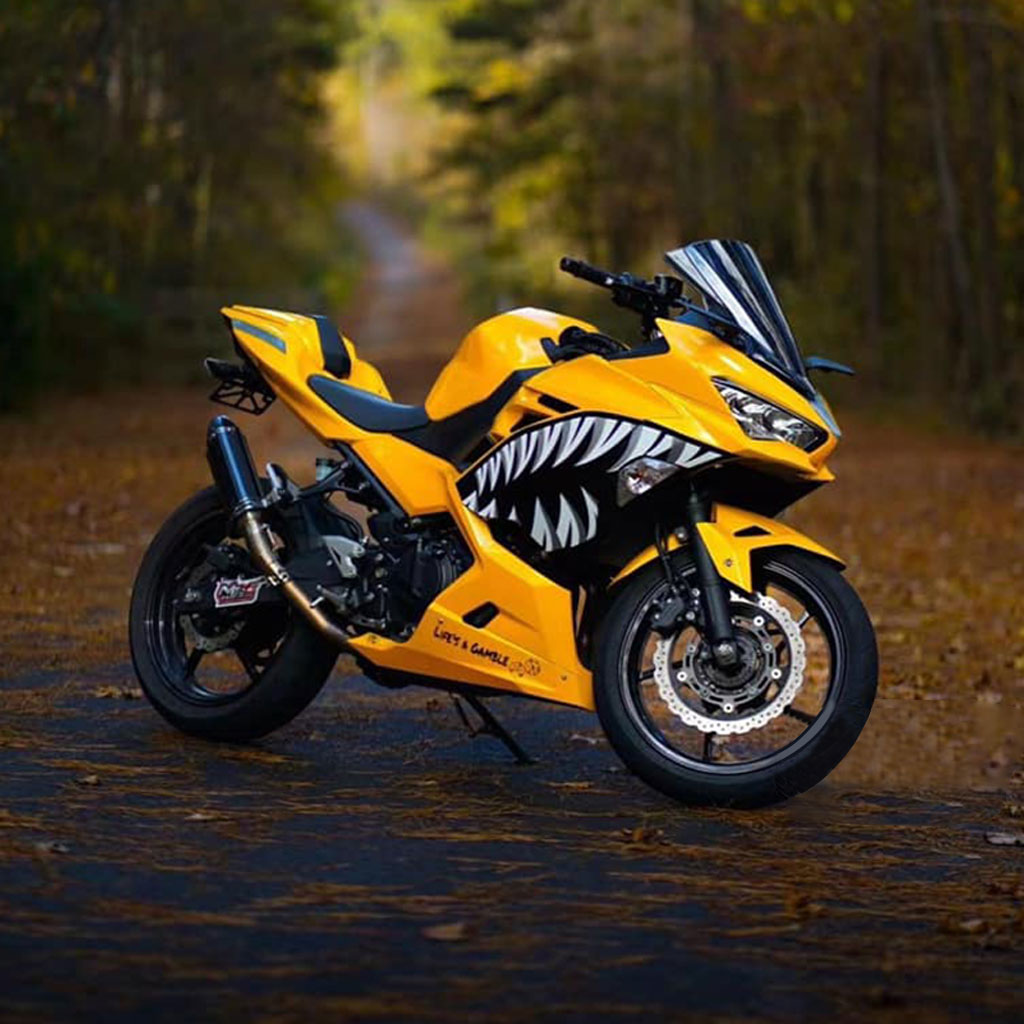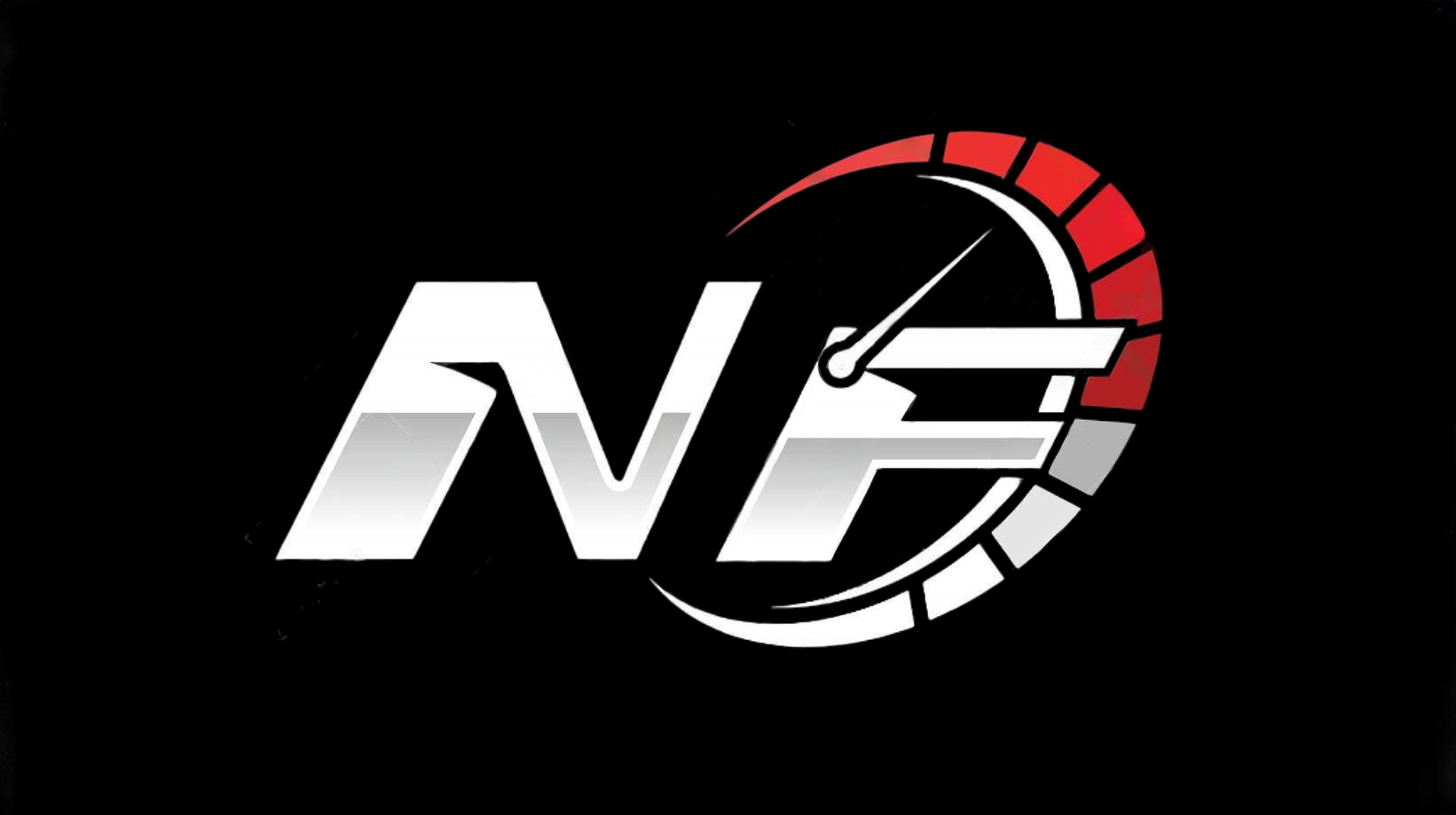Restoring the Yamaha 2004 R6: How to Keep a Classic Supersport Looking Modern
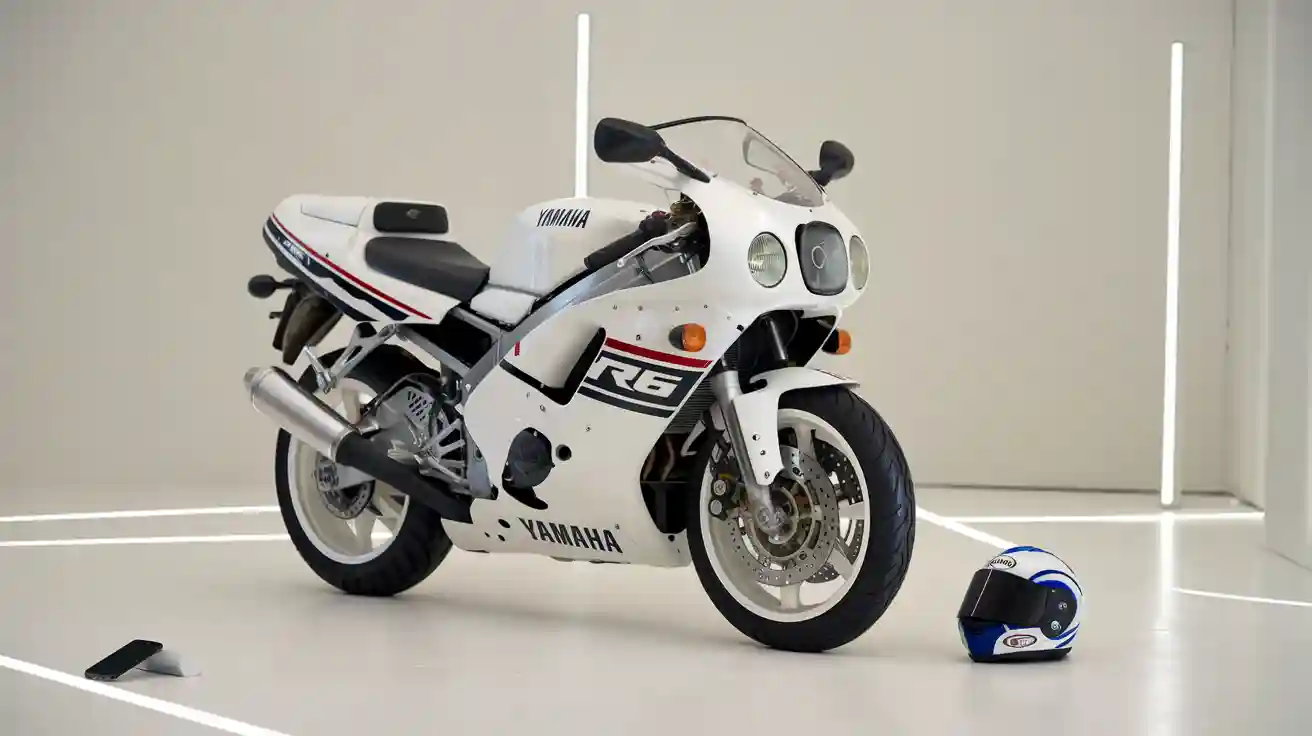
You can keep your yamaha 2004 r6 reliable and modern by combining a complete restoration with regular maintenance and modern fairing solutions. Examine every engine part of your r6 for signs of wear. Restore the classic yamaha superbike by choosing high-quality fairings and upgrading your engine for better performance. Clean your motorcycle often to protect the engine and maintain yamaha r6 performance. Consistent engine care keeps your r6 running strong, and modern fairings help your yamaha stand out.
Assessing Your Yamaha 2004 R6 Motorcycle
Inspecting Bodywork and Fairings
Start your restoration by checking the bodywork and fairings on your Yamaha 2004 R6. Look for broken or scratched parts, especially on the clip-ons, footpegs, levers, and both sides of the bodywork. Examine the gas tank to see if you can save it or if you need a replacement. Many Yamaha motorcycles from this era have fragile OEM plastics. These can break easily in a crash. Track fairings are easier to repair and install than the original plastics. You may face fitment problems with new fairings, so you might need to align or drill holes for a proper fit. If you find cracks or damage, you can repair them with sanding, gluing, or bondo. Sometimes, you need to create custom graphics because kits for older bikes are hard to find.
Evaluating Mechanical Condition
Next, check the mechanical parts of your R6. Focus on the engine, exhaust pipe, and tires. The engine is the heart of your Yamaha motorcycle. Look for signs of oil burning or valve problems. Sometimes, you may find missing valve retainers or cam chain guides when you open the engine. Change all fluids and filters before you start the engine. Safety is important, so make sure you safety-wire bolts like the drain plug and brake bolts. If you find damaged parts, look for replacements such as aftermarket clip-ons, exhausts, or brake levers. Sourcing affordable parts and fabricating custom brackets may be necessary.
Checking Electronics and Wiring
Electrical issues are common in Yamaha motorcycles from 2004. Check the rectifier/regulator and stator. Problems here can cause battery damage or even ECU failure. Incorrect wiring can blow fuses or overheat the battery. Look for melted headlight connectors or bulbs with too high wattage. Test the charging system before replacing any parts. The neutral switch or light may also fail, which can point to bigger electrical problems. Always diagnose the engine’s electrical system carefully to avoid further damage.
Tip: Take your time during this assessment. Careful inspection helps you avoid bigger problems later in your Yamaha R6 restoration.
Yamaha 2004 R6 Restoration Essentials
Engine Rebuild and Tuning
You need to focus on the engine when restoring your Yamaha 2004 R6. The engine is the heart of your superbike and plays a huge role in racing and performance. Start by removing the engine from the frame. Clean every part and inspect for damage or wear. Replace worn pistons, rings, bearings, and gaskets. Check the valve clearances and adjust them to factory specs. This step is important for keeping your engine running smoothly at high RPMs, which is common in racing.
A full engine rebuild can cost between $5,000 and $5,500. This price includes parts, labor, and machining. You may spend 8-13 hours on labor, plus extra time for teardown and inspection. Here is a breakdown of typical costs:
| Cost Component | Estimated Cost Range | Notes |
|---|---|---|
| Gaskets + Oil Seals | $50 - $200 | Consumables vary depending on engine condition |
| Top End Parts | Variable | Includes pistons, rings, valves, cam chain, cams if needed; depends on engine type |
| Bottom End Parts | Variable | Bearings, bushings, gearbox parts, clutch parts, stator/rotor parts |
| Machining | $400 - $1500 | Barrel honing, valve seat resurfacing, porting; depends on engine and work needed |
| Vapour Blasting/Cleaning | $500 - $1000 | Optional for engine appearance |
| Crank Rebuild/Balancing | $800 - $1200 | May require specialist service depending on crank type |
| Labour | $800 - $1300 | Estimated 8-13 hours at $100/hr; includes teardown, inspection, reassembly |
Tip: Use a repair manual like Haynes for step-by-step instructions. Manuals help you avoid mistakes and improve Yamaha R6 performance.
You should also tune the engine after rebuilding. ECU tuning helps you get the best performance for both street and racing use. A well-tuned engine gives you more power and smoother throttle response.
Suspension and Brake Overhaul
Suspension and brakes are critical for safety and performance. You want your R6 to handle well on the street and track. Start by checking the forks and rear shock. Look for leaks, worn seals, or pitted tubes. Replace fork oil and seals if needed. Consider upgrading to stiffer springs or adjustable shocks for better racing performance.
Brakes need special attention. Inspect the brake pads, rotors, and lines. Replace worn pads and warped rotors. Stainless steel brake lines give you better feel and stopping power. Bleed the brakes to remove old fluid and air bubbles.
Here are the essential components you should address during your Yamaha 2004 R6 restoration:
- Brakes
- Suspension
- Chain
- Engine parts
- Valve clearances
- Coolant system
- Electrical systems
Regular maintenance of these parts keeps your motorcycle safe and ready for racing or daily riding. You can save money by doing some work yourself. For example, changing brake pads costs about $40 every 10,000 miles. A rear stand, which costs around $100, makes maintenance easier.

Upgrading Electrical Components
Electrical upgrades improve reliability and performance. The Yamaha 2004 R6 often has issues with the stator, regulator/rectifier, and battery. You should check these parts first. Replace the stator and regulator/rectifier with OEM parts for the best reliability. If you need aftermarket parts, Rick's Electric stators are a good choice.
Upgrade your battery to a modern lithium type, like a Shorai lithium battery. This upgrade gives you better starting power and reduces weight, which helps in racing. Make sure all electrical connections are clean and tight. Corroded or loose connections can cause failures and hurt performance.
Note: Track use without headlights can stress the regulator/rectifier. Keep the area well-ventilated and check connections often.
A well-maintained electrical system keeps your Yamaha running strong. You will avoid common problems and enjoy better performance on every ride.
Modern Fairing Solutions for the R6
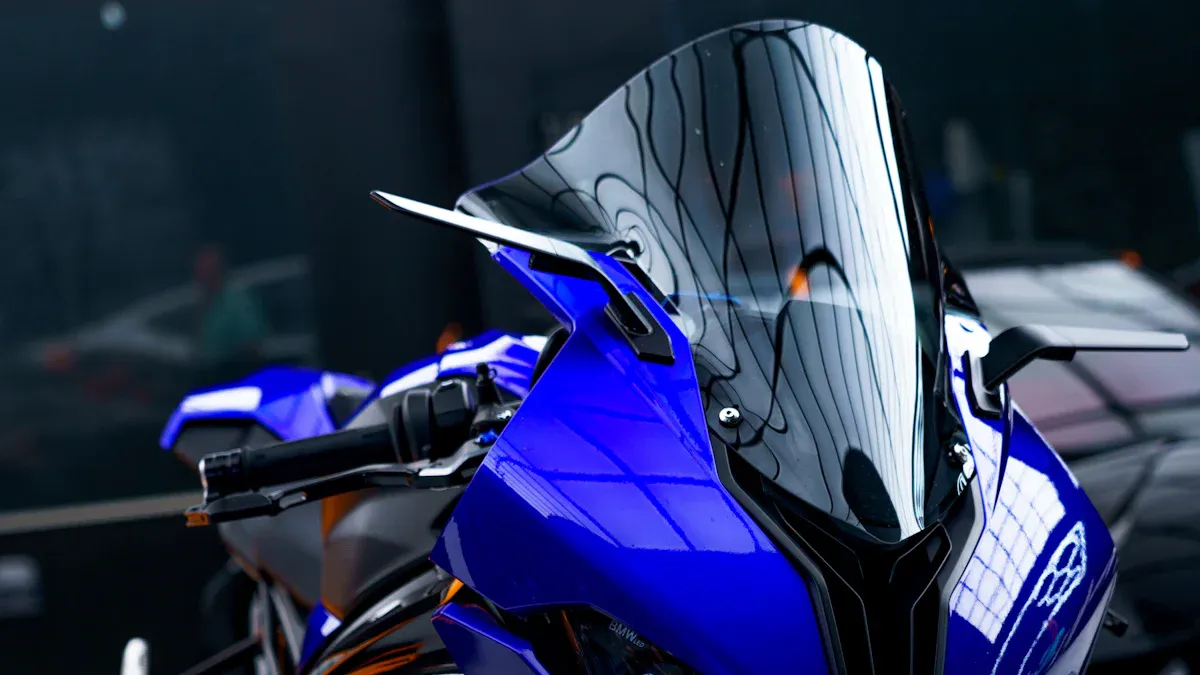
Choosing Aftermarket Fairing Kits
You can give your R6 a fresh look and improved durability by choosing the right aftermarket fairing kit. Many modern kits use high-quality ABS virgin thermoplastic. Manufacturers use injection molding machines to create fairings that match the strength and flexibility of the original parts. This material protects your engine from debris and weather, which is important for both street and racing use.
Most kits come with pre-drilled holes, so you can bolt them directly onto your R6. You do not need to drill new holes, which saves time and reduces the risk of mistakes. The finish on these fairings often includes six layers of paint and a clear coat. Decals are placed under the clear coat, so they last longer and look better. You get a show-quality finish that stands out at any racing event.
When you buy a kit, you usually receive a 180-day warranty. This warranty covers problems like peeling, fading, cracking, or bubbling. If you find any defects, the company will replace the kit after confirming the issue. Paint color may not match the factory shade exactly, but the difference is small and does not affect engine or racing performance.
Tip: If you are new to installing fairings, consider professional help. This ensures a perfect fit and protects your engine and R6 from damage.
- Material quality close to OEM fairings
- Pre-drilled holes for easy installation
- Six layers of paint and clear coat for a premium finish
- Decals protected under the clear coat
- 180-day warranty for peace of mind
- Slight paint color variation possible
- Reliable returns and replacements
Fitment Tips and Installation Advice
Installing modern fairings on your R6 can seem challenging, but you can make the process easier by following a few simple steps. Start by organizing all bolts and fasteners. You want to avoid losing any small parts during the installation. Carefully remove plastic rivets to prevent breaking them. Disconnect electrical components like indicators and headlights before you take off the old fairings. This step protects your engine wiring and keeps your R6 ready for racing.
You will find several types of fasteners, such as hex bolts, Phillips screws, plastic rivets, and push pins. Keep them sorted so you can put everything back in the right place. Some panels require careful unclipping or gentle maneuvering. Take your time with these tricky spots to avoid damaging the new fairings or your engine.
When you install the new kit, loosely fit all parts first. This allows you to make small adjustments for perfect alignment. The upper tail fairing can be hard to fit over the subframe, so be patient. Follow this sequence for the best results:
- Install the upper fairing.
- Attach the right lower fairing.
- Add the right mid fairing.
- Place the left lower fairing.
- Secure the left mid fairing.
- Fit trim pieces and ram air tube covers.
- Finish with the tail section.
Handle small trim pieces and ram air tube covers with care. Replace washers and check that all locks and cables are in the correct position. When you finish, tighten all bolts and check the fit. This process keeps your engine protected and your R6 looking sharp for racing or daily rides.
Note: Always follow the removal steps in reverse order during reinstallation. This helps you avoid alignment and fitment issues.
Aesthetic Upgrades and Custom Touches
You can modernize your R6 and make it stand out by choosing the right aesthetic upgrades. Many owners select aftermarket fairing body kits with customizable colors and decals. These kits use compression-molded ABS material, which gives your R6 a full bodywork replacement. This upgrade not only refreshes the look but also adds protection for your engine during racing.
Custom graphics and unique paint schemes let you express your style. You can choose bold colors, racing stripes, or sponsor logos. Some kits come with pre-installed decals under the clear coat, so they last longer and resist fading. This attention to detail keeps your R6 looking new and ready for any racing event.
You can also add small touches, such as colored bolts, carbon fiber trim, or LED accent lights. These upgrades do not affect engine performance, but they make your R6 more eye-catching. Many riders enjoy showing off their motorcycle at meets or on the track. A modern fairing kit helps you achieve a professional racing look while protecting your engine and improving aerodynamics.
Pro Tip: Choose a fairing kit that matches your vision for your R6. A well-chosen kit can boost your confidence and make every ride more enjoyable.
R6 Motorcycle Maintenance for Longevity
Cleaning and Protecting Surfaces
You want your r6 to look great and last a long time. Cleaning your motorcycle keeps the engine and bodywork in top shape. Use the right products to protect every surface. Here is a table of recommended cleaners and their uses:
| Product Name | Purpose and Effectiveness | Surface Protection Details |
|---|---|---|
| Yamaha PPC Parts Cleaner | Cleans engine parts, electrical components, removes oil and grease | Leaves no residue, safe for internal and external engine components |
| Yamaha Combustion Chamber Cleaner | Removes carbon, gum, varnish, oil deposits from engine parts | Prevents carbon build-up, keeps engine clean |
| Yamaha External Engine Cleaner & Degreaser | Removes grime from external engine parts, safe on rubber and plastic | Protects engine surfaces from corrosion |
| Yamaha Silicone Protectant & Lubricant | Shields metal, rubber, and neoprene from oxidation and corrosion | Adds a silicone layer, protects against rust |
| Yamashield Rust & Corrosion Protectant | Shields metal and electrical parts from moisture and rust | Forms a thin film, loosens corroded parts |
| Yamaha Battery Terminal Cleaner & Protector | Cleans battery terminals, extends battery life | Leaves a protective film |
| Yamaha Brake & Contact Cleaner | Cleans brake parts, removes dust and dirt | Use with care, may harm plastics and decals |
Tip: Always dry your engine and bodywork after washing to prevent water spots and corrosion.
Routine Mechanical Checks
Regular maintenance helps your engine run smoothly and keeps your r6 safe. You should follow a schedule for each task. Here is a table to guide you:
| Maintenance Task | Recommended Interval | Importance Summary |
|---|---|---|
| Oil Change | Every 3,000 to 4,000 miles or 6 months | Prevents engine wear and keeps engine healthy |
| Brake Fluid Replacement | Every 1 to 2 years | Maintains braking power |
| Tire Inspection | Every 1,000 miles | Ensures safe handling |
| Chain Maintenance | Every 500 to 1,000 miles | Prevents chain and engine wear |
| Air Filter Replacement | Every 12,000 miles or once a year | Keeps engine airflow clean |
You should also:
- Lubricate the chain when it looks dry.
- Replace brake fluid if it turns dark.
- Adjust cables as needed.
- Clean and lubricate the brake lever.
- Check tire pressures often.
- Inspect spark plugs and air filter.
Preventing Common Issues
You can avoid many problems with regular maintenance. Here are some best practices:
- Keep the fuel tank above one-quarter full. This keeps the fuel pump cool and lubricated, protecting the engine.
- Replace the fuel filter every 20,000 to 30,000 miles. This prevents clogging and engine strain.
- Use high-quality, non-ethanol fuel. This reduces corrosion inside the engine.
- Never run the tank dry. The fuel pump needs fuel for lubrication.
- Store your motorcycle with a full tank and fuel stabilizer during long breaks. This prevents moisture and varnish in the engine.
- Clean and lubricate the chain often. This stops dirt buildup and chain wear, which can damage the engine.
Note: Routine maintenance reduces the risk of chain failure, engine problems, and costly repairs. Your r6 will stay reliable and ready for every ride.
Real-World Yamaha R6 Restoration Examples
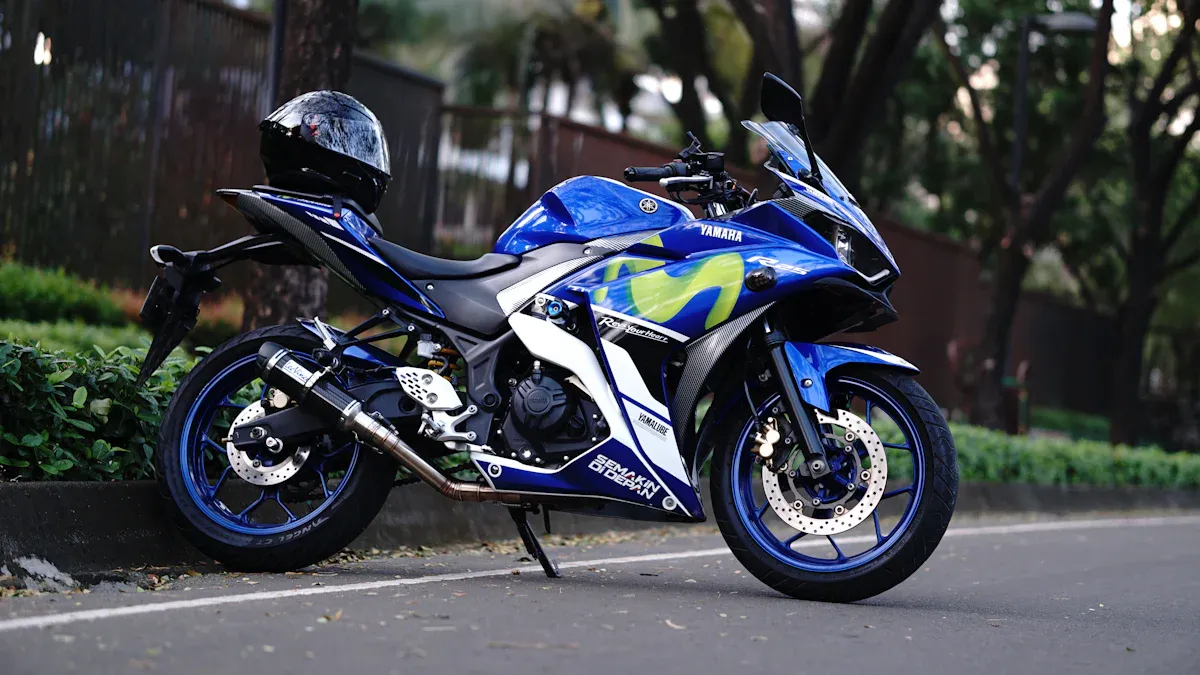
Before-and-After Restoration Stories
You can find many inspiring stories about restoring a Yamaha 2004 R6. One standout project shows how you can keep the classic look while adding modern upgrades. The owner started with a well-used Yamaha R6. The engine needed a full rebuild. You would see worn pistons, tired bearings, and old gaskets. The owner removed the engine, cleaned every part, and replaced all worn pieces. After the rebuild, the engine ran smoother and stronger.
Next, the owner focused on the suspension and brakes. Upgrades included new fork internals and an adjustable rear shock. These changes improved handling and made the Yamaha feel new again. The project also added a full exhaust system and a Power Commander. These upgrades helped the engine breathe better and boosted performance.
Before the restoration, the R6 looked tired and outdated. After the work, the motorcycle had a fresh look and better performance. The engine sounded crisp, and the Yamaha handled like a modern sportbike. You can see how careful work on the engine and smart upgrades can transform your R6.
Case Studies Using Modern Fairings
Modern fairings can make your Yamaha R6 stand out. In one case, a restorer used fiberglass race bodywork to replace the old plastics. The new fairings fit well and protected the engine from debris. The owner also added aftermarket rearsets and protective sliders. These changes kept the engine safe during track days and gave the Yamaha a sharp, modern look.
You can also upgrade the engine with velocity stacks, an aftermarket air filter, and ignition advance. These parts help the engine make more power and improve throttle response. Stainless steel braided brake hoses and new suspension parts add even more performance.
When you combine modern fairings with engine upgrades, you get a Yamaha R6 that looks fresh and performs at a high level. You keep the classic frame but enjoy the benefits of new technology.
These real-world examples show that you can restore your Yamaha R6 and enjoy both classic style and modern performance. Focus on the engine, choose the right fairings, and your motorcycle will turn heads for years.
You can keep your Yamaha 2004 R6 looking modern and running strong by combining restoration, regular maintenance, and modern fairing solutions. When you use high-quality Yamaha fairings, you protect the engine from weather and impacts. Regular Yamaha engine checks, cleaning, and tune-ups help your motorcycle stay reliable. Yamaha fiberglass fairings resist UV rays and damage, so your classic Yamaha keeps its color and shape. You should always care for the Yamaha engine, replace spark plugs, and clean carburetors. With these steps, your Yamaha engine will last, and your motorcycle will keep its value and style for years.
FAQ
How often should you replace the fairings on your Yamaha 2004 R6?
You should replace fairings when you see cracks, deep scratches, or broken mounting tabs. If you ride often or race, check them every season. High-quality aftermarket fairings can last for years with proper care.
What is the best way to keep your R6 engine running smoothly?
Change the oil every 3,000 to 4,000 miles. Use the correct oil type. Clean or replace the air filter regularly. Check spark plugs and keep the chain lubricated. These steps help your engine last longer.
Can you install modern fairings by yourself?
Yes, you can install modern fairings at home. Organize all bolts and fasteners before starting. Follow the instructions in your kit. If you feel unsure, ask a professional for help to avoid mistakes.
Which upgrades make your Yamaha 2004 R6 feel more modern?
You can add LED headlights, digital gauges, and adjustable levers. Upgrade the suspension and brakes for better handling. Modern fairings and custom graphics also give your R6 a fresh, updated look.
What should you do if your R6 has electrical problems?
First, check the battery and fuses. Inspect wiring for damage. Replace faulty parts like the stator or regulator/rectifier. If problems continue, ask a mechanic for help. Electrical issues can affect safety and performance.
See Also
Top Yamaha R6 Fairing Kits Reviewed For Style And Power
Reasons Yamaha R6 Fairings Are Essential For Every Rider
Rebuilding A Wrecked YZFR7 From Damage To Triumph
Effective Tips For Cleaning And Maintaining Motorcycle Fairings
